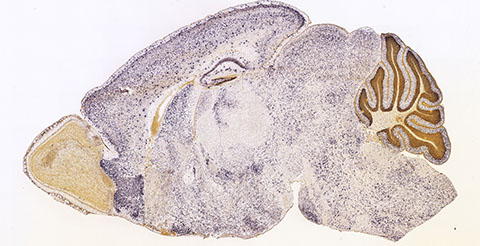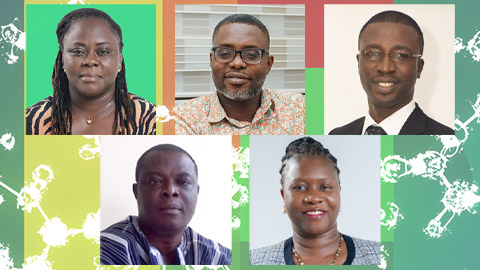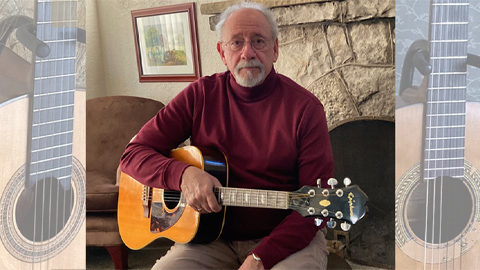
Spatial transcriptomics sharpens distinctions between brains
Single-cell RNA sequencing is becoming a workhorse of transcriptomics, giving researchers details on transcription in individual cells and a sense of both tissue-level heterogeneity and how many cell types are present. As powerful as single-cell techniques are, they pose a challenge in that tissues must be dissociated to be analyzed. This can cost contextual information in tissues where a cell’s position is important.
In the brain, for example, many functions depend on interactions between adjacent cells. Based on single-cell sequencing, researchers have identified multiple types of both inhibitory and excitatory neurons in the brain and dozens of subtypes of glia, or nonneuronal cells. But to learn more about how position affects function and how this diversity of cell types arises, researchers need more information about which cells are where — a question for spatial transcriptomics.
There are several ways to assay the transcriptome without losing spatial information. Researchers can microdissect tiny, defined portions of tissues for RNA sequencing assays; they can capture nucleic acids in a known, spatially defined pattern before single-cell sequencing; or they can hybridize fluorescent probes to RNA and image it in thin tissue sections, sometimes after expanding the tissue. Scientists have struggled to strike a balance between spatial resolution and the number of transcripts they can assay at once.

In the journal Science, a Harvard team used a multiplexed in situ hybridization technique called MERFISH, which assays tissue slices for a selection of thousands of genes, to identify dozens of cell types in multiple regions of the mouse and human cortexes. The researchers spotted numerous interesting distinctions between the two species; for example, the human cortex is composed of a higher proportion of glia and inhibitory neurons than the mouse cortex. Human brains were also much more apt to show soma, or cell body, interactions between distinct cell types, particularly neurons and glial cells, suggesting more complex contact-mediated relationships between these cells.
In another paper in Science, researchers based at Yale and the University of Wisconsin–Madison, compared human, macaque, chimpanzee and marmoset brain regions responsible for cognition, identifying subtle differences in important genes, such as a dopamine-producing enzyme, in certain cell types by region.
These techniques have yet to capture single cells in space. However, researchers are developing ways to get closer. A method published in the journal Nature Biotechnology this year by a research team from across Europe merges expression signatures from single-cell RNA sequencing experiments with spatial transcriptomic location from a sparse subset of these transcripts. By combining the data, the method can determine which classes of cells exist in each location and which type most likely occupies a given location. Other scientists at Harvard are working on ways to determine likely boundaries between cells based on their transcriptomes.
Enjoy reading ASBMB Today?
Become a member to receive the print edition monthly and the digital edition weekly.
Learn moreGet the latest from ASBMB Today
Enter your email address, and we’ll send you a weekly email with recent articles, interviews and more.
Latest in Opinions
Opinions highlights or most popular articles

Getting to know scientists half a world away
In a program at Wellesley College, students interview and write about researchers at a university in Ghana.

Let’s make ASBMB awardees look more like BMB scientists
Think about nominating someone outside your immediate network.

A paleolithic peer review
You might think review panels have only been around for the last century or so. You would be mistaken.

Early COVID-19 research is riddled with poor methods and low-quality results
The pandemic worsened, but didn’t create, this problem for science.

So, you went to a conference. Now what?
Once you return to normal lab life, how can you make use of everything you learned?

My guitar companion
A scientist takes a musical journey through time and around the world.

